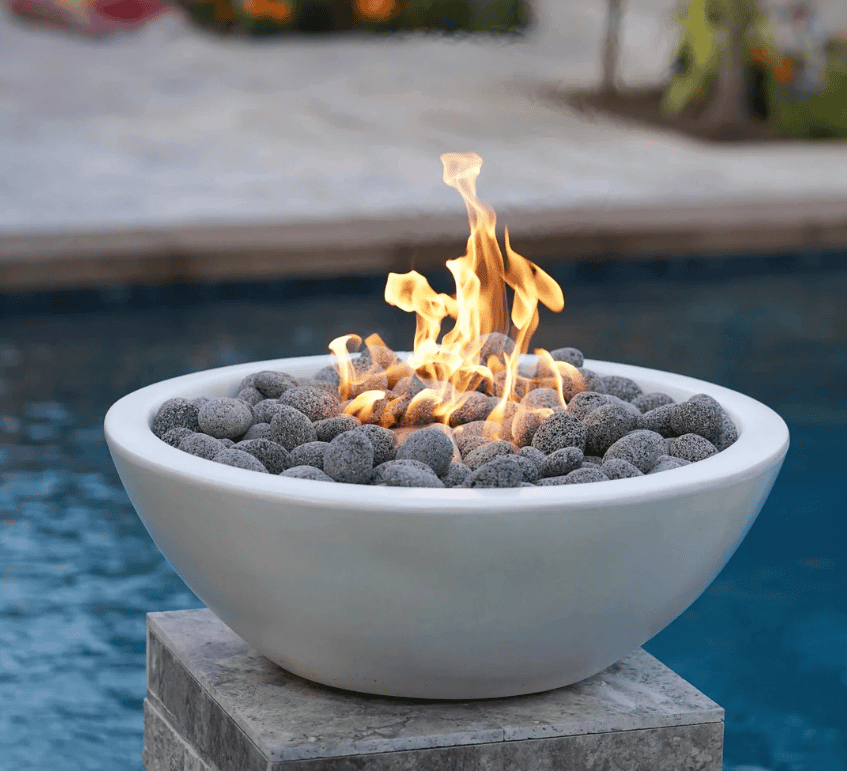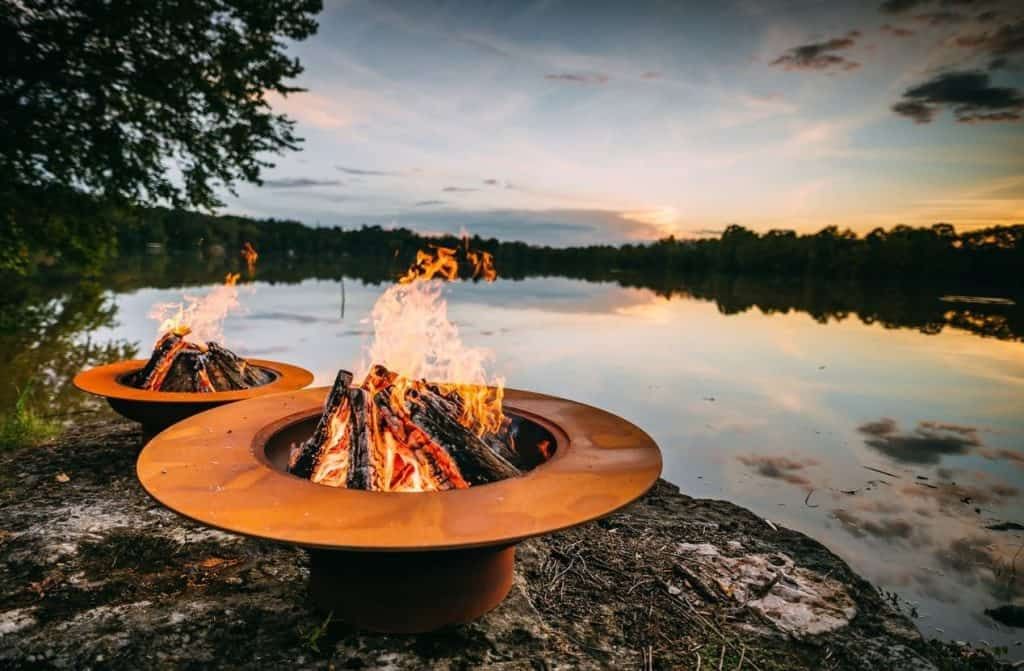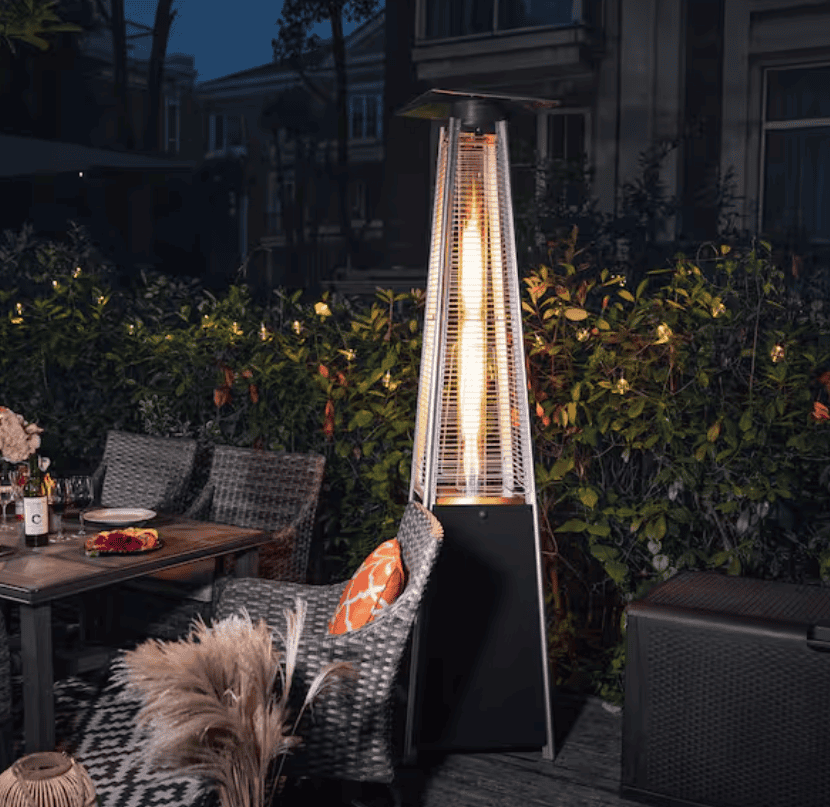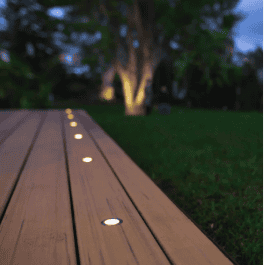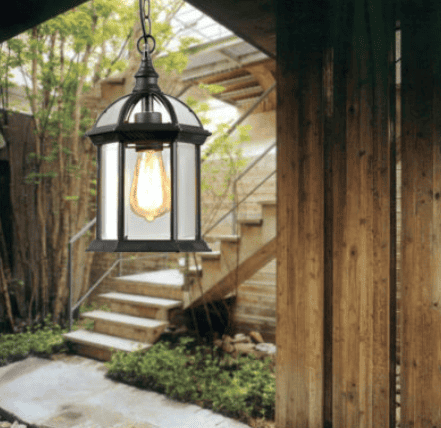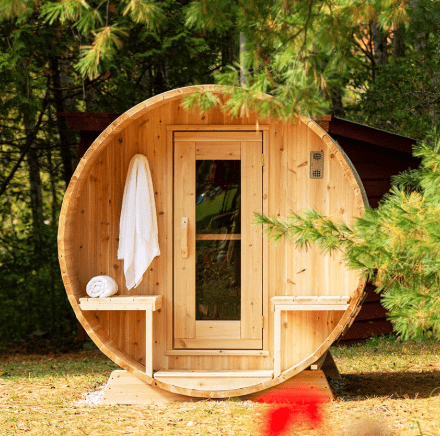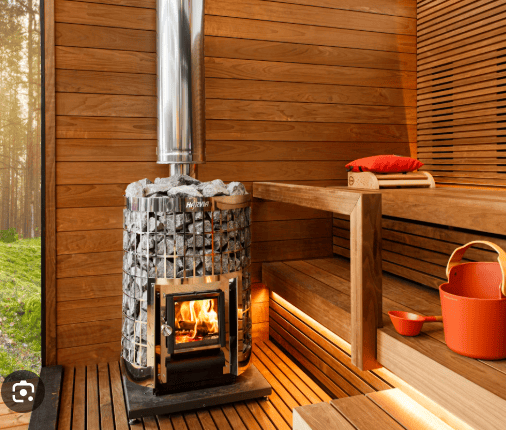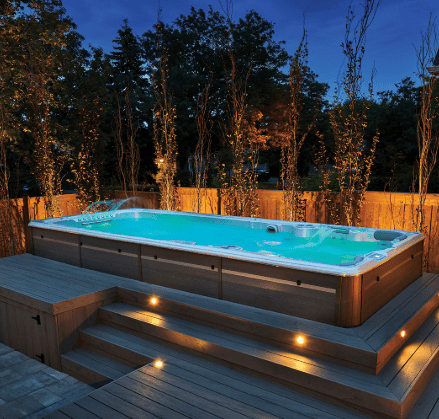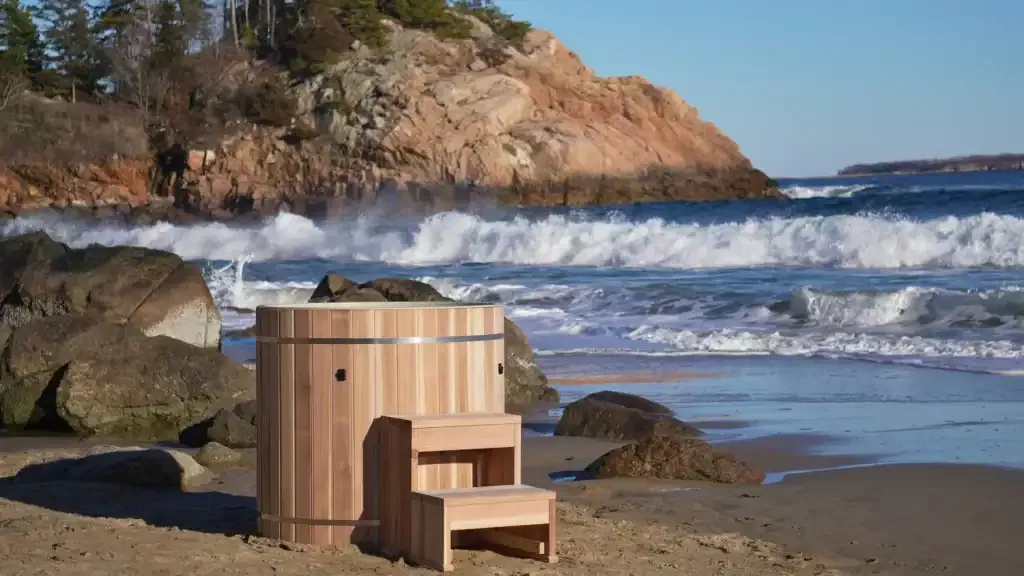Outdoor Spa Tubs
Cold Plunge & Ice Bath: How Often Should You Cold Plunge for Maximum Health Benefits?
Maximize health benefits with cold plunge & ice bath. How often should you take the plunge with sauna? Discover ideal cold water immersion frequency.
The practice of deliberately exposing oneself to cold temperatures, such as through a cold plunge or ice bath, has gained immense popularity. People are drawn to it for its potential physical and mental health benefits. But how often should you cold plunge to maximize these advantages? This article explores the science and history behind cold therapy. We will discuss how to safely incorporate cold plunges into your wellness routine, especially when combined with sauna sessions.
Understanding Cold Plunge and Ice Bath Therapy
What is a Cold Plunge?
A cold plunge involves immersing your body in cold water, typically in a cold plunge tub or cold plunge pool. The water temperature is usually between 50-59°F (10-15°C). Taking a cold plunge is a form of cold water immersion intended to elicit specific physiological responses. Exposure to cold water shocks the body, prompting various systems to react, potentially resulting in numerous physical and mental health benefits.
Differences Between Cold Plunge and Ice Bath
While the terms are often used interchangeably, there is a subtle difference between a cold plunge and an ice bath. An ice bath generally implies the presence of ice, resulting in colder water temperatures, usually lower than 50°F (10°C). A cold plunge, on the other hand, might not necessarily involve ice, but it still uses cold water to achieve the desired effect of cold therapy. Whether you take the plunge into an ice bath or a cold plunge, the experience offers the benefits of cold.
Historical Use of Cold Therapy
The use of cold therapy dates back centuries. Ancient civilizations, including the Romans and Greeks, recognized the health benefits of cold water immersion. They utilized cold water therapy for various purposes, from reducing muscle soreness to improving overall well-being. The practice continues today with a surge of interest in techniques like contrast therapy. The hot and cold exposure offer potential physical and mental benefits.
Health Benefits of Cold Plunging
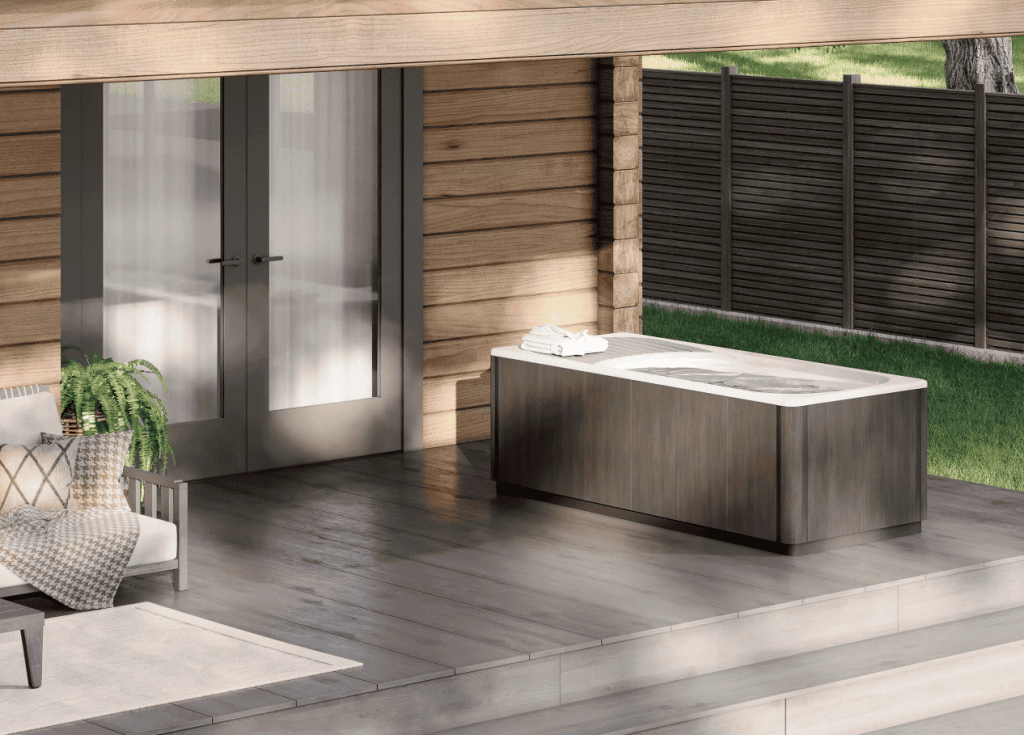
Physiological Effects of Cold Water Immersion
The physiological effects of cold water immersion are profound, triggering what’s known as the cold shock response. When you take the plunge into cold temperatures, your body experiences a cascade of reactions designed to preserve core body temperature. This includes vasoconstriction, where blood vessels narrow to reduce heat loss, and an increase in heart rate and blood pressure. Regular cold exposure can improve cardiovascular health and reduce muscle soreness. These effects contribute to the health benefits and enhance the plunge experience, making regular cold plunging a beneficial practice.
Potential Mental Health Benefits
Beyond the physical advantages, the mental health benefits of a cold plunge are noteworthy. Exposure to cold stimulates the release of norepinephrine, a neurotransmitter associated with alertness and improved mood. Many people report feeling invigorated and more focused after taking a cold plunge or ice bath. The ability to withstand the initial discomfort from exposure to cold water can also improve mental resilience and stress management. Therefore, the cold immersion experience offers both physical and mental benefits, thus improving the overall sense of well-being.
Comparison of Cold Plunge and Sauna Benefits
Contrast therapy, alternating between a sauna session and a cold plunge, offers a comprehensive approach to wellness. The sauna promotes relaxation, detoxification, and cardiovascular health through heat exposure, while a cold plunge reduces inflammation and boosts mental alertness. Combining these creates a synergistic effect. The hot and cold contrast can improve circulation, reduce muscle soreness, and enhance overall resilience. Contrast therapy is an effective method for obtaining the health benefits of both treatments by taking a cold plunge.
How Often Should You Cold Plunge?
Frequency Recommendations for Maximum Health Benefits
Determining how often you should cold plunge depends on individual factors and goals. For maximum health benefits, many experts recommend incorporating cold plunge sessions two to three times per week. However, it’s essential to listen to your body and start slowly, gradually increasing the frequency and duration as you become more accustomed to the cold. A regular cold plunge routine, even with shorter durations, can offer significant physical and mental health benefits. Taking a cold plunge on a regular basis increases the benefits of cold exposure.
Factors Influencing Cold Plunge Frequency
Several factors influence how often you should take the plunge. These include your experience with cold therapy, your overall health, and your tolerance to cold temperatures. If you’re new to cold plunge, start with shorter sessions and gradually increase the duration as you adapt to the cold shock response. Individuals with certain health conditions, such as cardiovascular issues, should consult with a healthcare professional before incorporating cold plunge into their routine. Factors of health benefits include experience and tolerance when taking a cold plunge.
Risks of Cold Water Exposure
While cold therapy offers numerous health benefits, there are potential risks associated with cold water exposure. Prolonged exposure to cold temperatures can lead to hypothermia, especially if the water temperature is too low. It’s crucial to monitor your body temperature and limit your time in the cold plunge tub to prevent adverse effects. People with cardiovascular issues should exercise caution, as the cold shock response can strain the heart. Always listen to your body and prioritize safety when incorporating cold plunge into your wellness routine. If not, you may take an ice bath for too long.
Incorporating Cold Plunges with Sauna Sessions
Benefits of Contrast Therapy
The integration of a sauna session with a cold plunge unlocks the potent advantages of contrast therapy, maximizing health benefits. This dynamic alternation between hot and cold exposure harnesses physiological responses from both extremes. A sauna session, inducing heat, promotes relaxation and detoxification, while taking a cold plunge immediately afterward leverages the body’s cold shock response to reduce inflammation. Alternating a sauna session and a cold plunge heightens mental benefits.
Ideal Cold Plunge Experience Following Sauna Use
Following a sauna session, the ideal cold plunge experience involves a short, immersive dip in a cold plunge tub with a water temperature between 50-59°F. The goal is to rapidly cool the body and leverage the cold shock response, reducing muscle soreness and enhancing mental clarity. Listen to your body; start with a brief immersion of 15-30 seconds and gradually increase as you become accustomed to the cold. Taking a cold plunge post-sauna further amplifies the health benefits.
Tips for a Successful Cold Plunge and Sauna Routine
For a successful cold plunge and sauna routine, prioritize safety and moderation. Start with shorter sauna session and cold plunge sessions and gradually increase the duration as your tolerance improves. Ensure proper hydration and avoid alcohol before using either. Listen to your body and discontinue if you experience dizziness or discomfort. It’s essential to take the plunge responsibly, maximizing the combined physical and mental health benefits while minimizing any potential risks from exposure to cold temperatures.
Setting Up Your Cold Plunge at Home
Choosing the Right Cold Plunge Tub
Selecting the right cold plunge tub is paramount for your home cold plunge therapy setup. Consider size, material, and insulation. A tub should comfortably accommodate your body in cold water. Insulated tubs maintain the cold water temperature longer, reducing ice consumption. Evaluate ease of cleaning and durability. Think about where you will place it, whether indoors or outdoors, as this affects your choice. Choosing the right tub ensures a safe and effective cold plunge experience with significant health benefits.
Creating a Cold Plunge Environment
Crafting an optimal cold plunge environment enhances the overall benefits of cold plunging. Ensure the space is safe, clean, and free from hazards. Maintain easy access for entry and exit. Having a thermometer handy to monitor the water temperature is beneficial. Consider adding elements like calming music or aromatherapy to promote relaxation and reduce the initial shock from cold exposure. A well-prepared environment turns a cold plunge into a truly restorative experience for both physical and mental well-being.
First Cold Plunge Tips for Beginners
If you’re new to cold plunge, start slow and steady. Begin with a cold shower to acclimate to the cold temperatures. Gradually transition to a cold plunge tub, keeping your initial sessions short, around 15-30 seconds. Focus on controlled breathing to manage the cold shock response. Listen to your body and exit if you feel overwhelmed. Remember, the plunge may feel intense, but the resulting mental benefits and invigorating effects make it worthwhile. Exposure to cold water increases health benefits.

